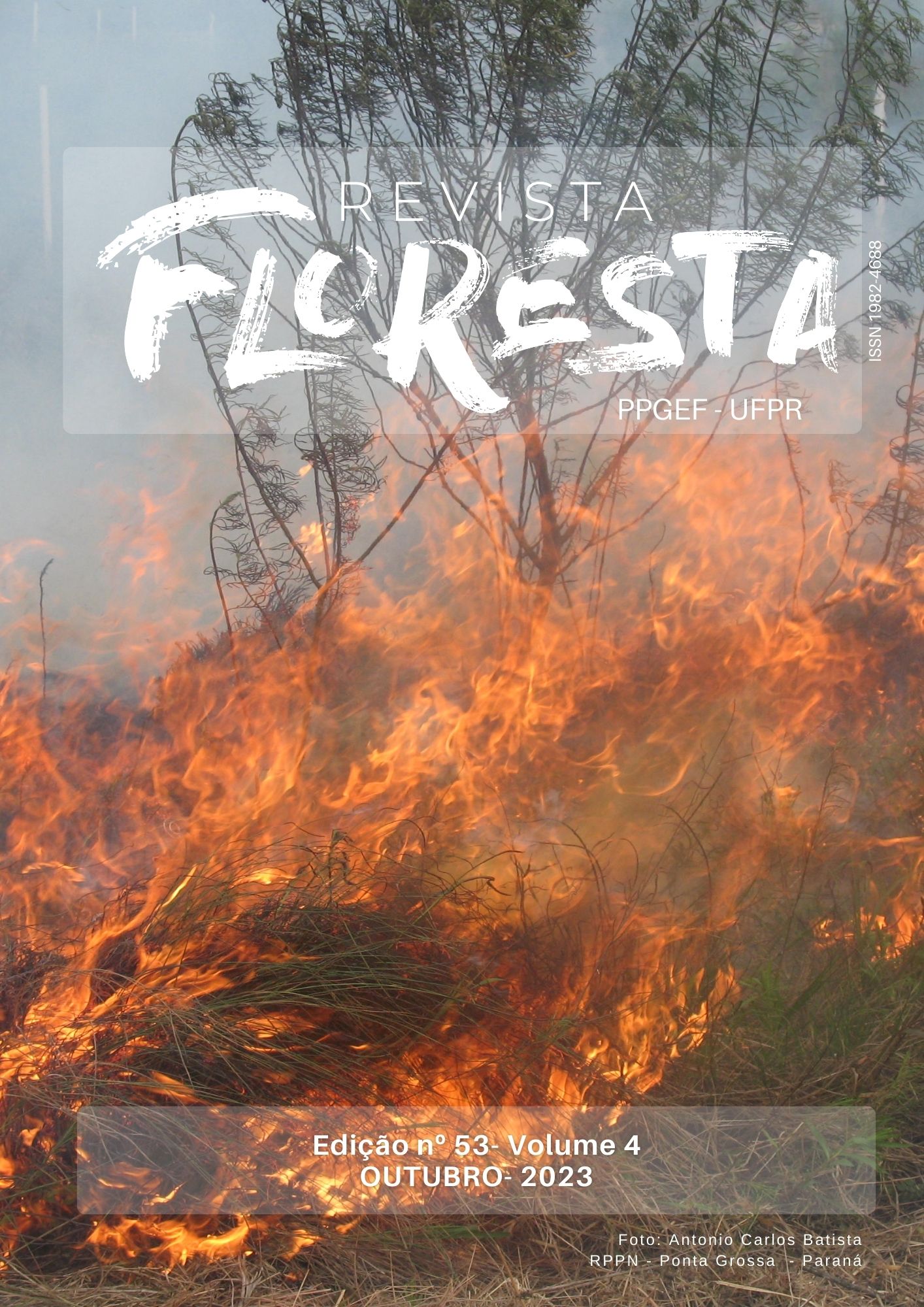STOCK AND WATER RETENTION CAPACITY OF LITTER ACCUMULATED IN ATLANTIC RAINFOREST
DOI:
https://doi.org/10.5380/rf.v53i4.88200Palavras-chave:
Forest Restoration, Ombrophilous Mixed Forest, Water retention.Resumo
Litter is an above-ground layer which is composed of leaves, twigs, reproductive material, and miscellany. It is responsible for essential processes such as soil protection, nutrient cycling and moisture retention. This study aimed to quantify the stock and water retention capacity of litter accumulated in areas of different ages in a forest restoration process. We conducted the study in the municipality of Otacílio Costa, Santa Catarina State, Brazil, in a forestry company. The area went through the extraction of Pinus spp. and displays six areas with different periods in forest restoration (13, 12, 11, 10, 4, and 3 years). At each age, we installed four plots, totaling 24 plots, and we performed five collections of litter in each plot, totaling 120 collections. We determined the Water Retention Capacity by the Blow method, and we determined the litter stock in the unit of Mg ha-1. The data were submitted to ANOVA, Tukey test, and Pearson's Linear Correlation test. The total average litter stock of the area was equal to 4.46 Mg ha-1. From all six areas evaluated, the oldest area in the forest restoration process, with 13 years, showed the highest litter stock and the highest water retention capacity (558.44%). The correlation between the litter stock and the water retention capacity was null, indicating that, as the areas progressed in the restoration process, the increase in accumulated litter did not influence the increase in their water-holding capacity.
Downloads
Publicado
Como Citar
Edição
Seção
Licença
Direitos Autorais para artigos publicados nesta revista são do autor, com direitos de primeira publicação para a revista. Em virtude da aparecerem nesta revista de acesso público, os artigos são de uso gratuito, com atribuições próprias, em aplicações educacionais e não-comerciais.A revista, seguindo a recomendações do movimento Acesso Aberto, proporciona acesso publico a todo o seu conteudo, seguindo o principio de que tornar gratuito o acesso a pesquisas gera um maior intrcambio global de conhecimento.
Conteúdos do periódico licenciados sob uma CC BY-NC-SA 4.0



